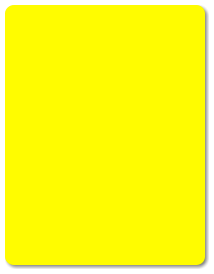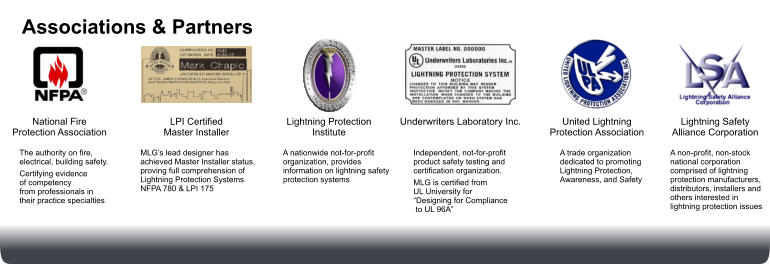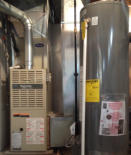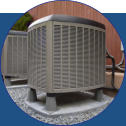
Industry Resources: Links, Education, FAQ



© Copyright Midwest Lightning Grounding, LLC 2014
Lightning facts gathered by The Lightning Protection Institute
A single bolt of lightning can carry over 30 million volts of electricity. Lightning can rip
through roofs, explode brick and concrete and ignite fires. Roofs, sidewalls, framing
and electrical wires are the areas most ignited by lightning fires.
– U.S. Fire Administration/Topical Fire Research
The average homeowner lightning claim in the U.S. is over $5,000, with claims rising
since 2004 and losses ranging from damage to expensive electronic equipment to
structural fires that destroyed entire homes.
– Insurance Information Institute (I.I.I.)
Lightning accounts for more than one billion dollars annually in structural damage to
buildings in the U.S.
– Underwriters Laboratories, Inc.
Lightning Protection is designed for two objectives. A lightning protection system
shields a home and provides a direct path to ground for the lightning current to flow. It
must also prevent damage to the home as the current flows through the system.
Lightning protection systems keep homeowners and their property safe from
lightning.
- Lightning Protection Institute
In Canada the Ontario Fire Marshall’s inspected lightning protection systems and
tracked lightning damage. During 1918-1939 they documented 17,982 lightning
related fires of which just 17 involved structures with lightning protection installed.
This is an efficiency of 99.999 percent. They also reported that “in no case has a
building rodded under the Lightning Rod Act been destroyed by lightning after having
been inspected by the Fire Marshall’s office.”
- Ontario Fire Marshall/Lightning Safety Alliance
Prevent Tragedy & Protect Your Assets
•
What is the personal risk to your family?
•
What is the risk of structural damage or complete loss
of your home?
•
Are electrical systems or equipment damage a
sustainable failure for your family?
•
Are there liability insurance benefits / consequences
for installing or not installing LP and Grounding
Systems?
•
What is the cost and inconvenience for minor/major
damages to:
o
main structures, out buildings and trees
o
personal belongings, automobiles
o
electrical boxes & circuits
o
generators, appliances, audio/video equipment,
computer equipment, tools
o
smart-house electrical systems, security systems &
low voltage wiring
Find out more:
www.lightning.org
www.lightningsafetyalliance.org
Contact MLG for a free in-home estimate
mark@midwestlightninggrounding.com
216-406-1742




LSA Learning Lightning Lunch for Architects & Engineers
The Lightning Safety Alliance is a Registered Provider with the American Institute of
Architects Continuing Education System. Credit earned upon completion of CES programs
will be reported to CES Records for AIA members. Certificates of Completion for non-AIA
members are available for self reporting credits. More than 30 LSA members are trained and
authorized to present our continuing education program.
Current class offering: Lightning Protection Basics 101, a review of proper lightning protection system design and application as conforms
with UL and NFPA lightning protection requirements.
Contact MLG to schedule your free class & lunch info@midwestlightninggrounding.com












F A Q
Frequently Asked Questions
Courtesy of the Lightning Protection Institute



Lightning Safety Tips from LPI
•
To begin preparing, you should build an emergency kit and
make a family communications plan.
•
Remove dead or rotting trees and branches that could fall
and cause injury or damage during a severe thunderstorm.
•
Postpone outdoor activities.
•
Remember the 30/30 Lightning Safety Rule: Go indoors if,
after seeing lightning, you cannot count to 30 before hearing
thunder. Stay indoors for 30 minutes after hearing the last
clap of thunder.
•
Secure outdoor objects that could blow away or cause
damage.
•
Get inside a home, building, or hard top automobile (not a
convertible). Although you may be injured if lightning strikes
your car, you are much safer inside a vehicle than outside.
•
Remember, rubber-soled shoes and rubber tires provide NO
protection from lightning. However, the steel frame of a hard-
topped vehicle provides increased protection if you are not
touching metal.
•
Shutter windows and secure outside doors. If shutters are not
available, close window blinds, shades or curtains.
•
Unplug any electronic equipment well before the storm
arrives.
Source: http://www.ready.gov/thunderstorms-lightning


The highly conductive copper and aluminum materials used in a lightning
protection system provide a low resistance path to safely ground
lightning’s dangerous electricity. These materials and components are
UL-listed and specially manufactured for lightning protection. When a
lightning protection grounding network is in place, the strike is
intercepted and directed to ground without impact to the structure,
occupants or contents. A lightning protection system that meets national
safety Standards of NFPA 780 and UL 96, UL96A includes strike
termination devices, down conductors, bonding, and surge protection.
Failure to follow the Standards or use of non-listed materials or methods
can result in inadequate protection.
No. This is a common misconception about lightning protection. Lightning
protection systems and strike termination devices (rods) simply intercept
a lightning strike and provide a safe and effective path that takes
lightning’s harmful electricity to ground. Lightning will strike a location
whether there is lightning protection in place or not. When a system is in
place it provides a preferential low resistance path for lightning from its
intercept location to a ground destination. A lightning protection system
directs lightning’s harmful current to ground, instead of it traveling through
a building’s plumbing or electrical system.
Nothing can prevent lightning from striking. If lightning is zeroed in on a
particular object it will strike regardless of any device or mechanism on
the ground. The purpose of a lightning protection system is to intercept
the lightning strike and dissipate it safety into the ground. In a system,
the strike termination devices (lightning rods) are placed at regular
intervals on the highest and most exposed parts of a structure. The strike
termination devices become the most likely point of contact for the
lightning streamer attachment, as they represent the quickest path to
ground. A lightning protection system doesn’t attract, repel or prevent a
lightning strike; rather a system provides an efficient grounding network
that provides a low-resistance path to ground for lightning’s electricity.
No. And unfortunately, lightning can side-flash from a tree and hit a
nearby structure. In addition, lightning traveling along tree roots can
enter a structure by jumping onto nearby telephone, cable and electrical
lines, introducing harmful surges. Lightning can also injure a tree from a
direct strike that can cause heavy limbs to split and fall onto a nearby
structure. Lightning damages and kills more trees than we can account
for in the U.S., so unless a tree is equipped with a lightning protection
system, it can be extremely vulnerable to damage by lightning—and a
nearby structure can be vulnerable, as well.
The electrical ground installed by your electrician is there to protect the
internal workings of the electrical system in your building to
accommodate everyday electricity usage. The electrical ground is not
designed to handle the mega electricity (100 million + volts of power or
200 kA of electrical energy) that a typical lightning strike can pack.
Insurance companies in most states offer premium credits for security
systems, fire alarms, residential sprinkler systems, permanently installed
back-up generators and other protective measures for the entire
perimeter of the home. Lightning protection systems are generally
recognized as “protection for the entire external perimeter” and as such,
are often considered for credits. Homeowners interested in securing an
insurance credit or discount for their lightning protection system
installation should check with their provider. Policies about lightning
protection discounts vary by insurance company. Since some providers
don’t have set policies regarding credits or incentives, the homeowner
should contact their agent or broker for assistance in determining their
eligibility for a discount.
Lightning protection is a highly specialized trade that is governed by
industry safety Standards. Design and installation is typically not within
the scope of expertise held by electricians, general contractors or
roofers. Only trained experts, like LPI-certified contractors that specialize
in lightning protection should install these systems. Design and
installation is not a do-it-yourself project. LPI is your trusted resource to
put you in touch with qualified lightning protection specialists who can
install systems in accordance with LPI, NFPA and UL safety Standards.
Strict adherence to national safety Standards is the best way to ensure
safe and effective protection.
While lightning protection is routinely specified, guidelines for
requirements vary in different parts of the country. There are many signs
that requirements for lightning protection are on the rise. Trends we are
seeing in the industry include:
•
Insurance companies recommending lightning protection and
providing customer incentives for system installations.
•
Requirements at local levels, as seen in the State of Florida
requiring lighting protection on buildings such as educational
facilities, hospitals, extended care homes and healthcare facilities.
•
Federal agencies like the FAA, Veterans Administration, Dept of
Defense, Federal Bureau of Prisons and others developing
customized lightning protection standards and requirements.
Requirements here, typically call for lightning protection to meet or
exceed NFPA 780, with third-party inspection certification cited for
all systems (as provided by UL or LPI-IP).
•
Litigation stemming from large-scale lightning losses and OSHA
issued citations for failure to provide adequate lightning protection
has caused mounting concerns for today’s building planners.
Since lightning is often seen as a preventable loss, mitigation
guidelines are increasingly calling for construction planners,
architects and engineers to include provisions for lightning
protection or lightning protection risk assessment in their projects.
•
Concerns about CSST gas piping and lightning-related losses
have led to increased recommendations for lightning protection,
bonding and grounding applications for homes in high-risk regions.
LPI-certified specialists stay appraised of industry requirements and can
assist with guidelines specific to your region and project.
LPI-certified specialists are dedicated to ensuring that today’s lightning
protection systems provide the best possible quality in both materials
and installation practices for maximum safety. LPI’s testing and
Certification program was created in 1971 by the industry to qualify
competence in lightning protection. The program responds to the needs
of government agencies, architectural and engineering firms and
insurance underwriters to certify excellence in system design, installation
and inspection.
Here are reasons why specifying LPI credentials for your project is
important:
LPI-certified installers must successfully pass the industry’s most
comprehensive testing requirements to receive certification.
Yearly recertification is required for Master Installers and Master
Installer/Designers.
Certification assures that national safety Standards of LPI, NFPA and UL
are met.
Certified installers and designers possess up-to-date knowledge of
changes in safety standards and scientific findings in the industry.
Certified installers and designers possess experience in a highly
specialized trade to ensure competence in system design, installation,
inspection and maintenance.
Certified installers know the best methods and materials to ensure
attention to quality and aesthetics.
Certification is voluntary within the industry, which means your LPI-
certified specialist holds himself/herself to a stringent standard by
electing to pursue the highest level of education and excellence in
lightning protection.
Contracting with a LPI-certified specialist saves you time and money.
Lightning protection is an affordable amenity that offers protection
against a leading cause of property damage. While pricing generally runs
less than 1% of the value of the structure, costs for protection vary
depending on the size of the structure, location, construction, roof type
and grounding conditions. As a rule of thumb, lightning protection is
typically less expensive than other building systems and amenities like
security, plumbing, generators and specialty lighting fixtures. A LPI-
certified specialist can provide helpful pricing information for your project
and region.




































